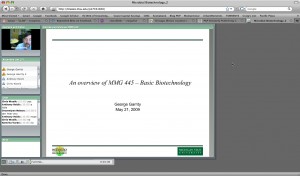Socializing and Disseminating the Academic and Intellectual Creation: Experiences from La Plata National University: The Session Blog
Date: July 10, 2009
Presenters: Gonzalo Villarreal, Marisa Raquel De Giusti

s13610, “Feet” January 27, 2009 via Flickr, Creative Commons Attribution. La Plata has a sandbox for OJS and OCS users to get a "feel" with templates!
Session Overview
This presentation was delivered by Gonzalo in real time through Skype.
Background on La Plata National University (UNLP)
He described UNLP as a major university in Argentina and Latin America. It has more then 90 000 students and 10 000 employees, including staff and administration.
About UNLP:
They produce journal articles, degree essays and theses, multimedia production, books and e-books and other products.
History of Development
In 2003, UNLP launched the Intellectual Creation Dissemination Service, SeDiCi, for 2 purposes:
– to provide authors a means to publish
– to benefit society for all it has invested in the university
The original plan of the university was to receive, digitize, catalog and upload documents to the SeDiCi website, but software was needed. After an extensive worldwide search, the team felt they had to design their own software. Celsius-DL was the answer to complete the service to scholars. It has since been recognized as the OEA’s award in 2005 as the best Digital Library in America.
Celsius-DL supports a free scheme and is used to configure a wide range of materials. It exports to Dublin-Core or Marc21, is a data and service provider and it is built on open source technologies.
Since 2007, UNLP has recognized the importance of disseminating academic and intellectual creations. Journals also were seen as crucial to disseminate, so SeDiCi was expanded to include them. In October, 2008, UNLP launched the Journals Portal. Pre-existing and new publications are both accepted. Authors publish through a review process, easily communicating with other authors, reviewers and editors. OJS was chosen as the platform for them to use.
They then decided to create the Congresses Portal. This helps groups and others organize meetings. PKP’s OCS was selected to supply the service. SeDiCi’s team offers user, systems and technical support to users, but they had to overcome some obstacles and learn how to use it.
Obstacles and Solutions
- Obstacles included many words or phrases in Argentina that were different from Spain. Corrected translations are now complete. In service to others, they are also available on PKP’s website for download.
- In addition, some OCS users needed to use some LaTex in their abstracts. None were available, but they are now available as a plugin.
- Next, the UNLP main website was comfortable for users, so the Journals and Congresses websites have been adjusted to look similarly. A comparison may be seen on-screen to show the similarities.
- Further, templates are available for users uncomfortable with changing them, but wanting to meet their own needs. OCS and OJS is fully customizable by editing a CSS file. Many CSS styles were made for publishers to choose from because not all had web designers to make changes.
- Finally, workshops online have been offered. Users can see an overview to see what the software is capable of and what it won’t do. There are workshops for users and workshops for managers. They have a “sandbox” area where users can try things without affecting the real system.
Note: the voice link with Gonzalo was lost in the last 2 minutes of his presentation. We hope all essential concepts were conveyed.
Blogger’s Thoughts:
The workshops sound tremendously helpful for users and managers. The sandbox feature is very practical and should be of interest to many. A great deal of work has been done to provide leadership in Argentina and its metron of influence. While the audio feed accomplished the task, it would have been good to see them in person to be able to ask questions and benefit from their experience. I was particularly interested in how their design of Celsius-DL provided benefits not found in software as a result of their worldwide search.
In light of the work so many other libraries and institutions are doing to promote the dissemination of scholarly knowledge and research, through either the use of OJS and OCS, one thought seems to echo through the workshops. It is a “cry” for collaboration and communication. From sharing experiences and collaborative problem-solvingj, to establishing some form of index standard are common issues shared by Mexico, the U.K., Canada and others. I hope a leader emerges and this is actualized.
While this is recognized as a technically-themed presentation, I wondered how much use of open journals resulted from their work. While I couldn’t access this information, I was able to view a page on their website that revealed how many “hits” they’ve had at SeDiCi and how many registered users they have. I was surprised that the vast majority originated in the United States! Journal numbers, particularly open journal numbers would be of interest to many at the next conference.
Presentation Link to be provided by conference organizers.
Presenter Links:
Gonzalo Villarreal [The blogger lacked the language to translate, but has listed some found on the SeDiCi repository!]
A Linux publication
Co-authored, in Portugese: Manuscript Character Recognition Overview of features for the Feature Vector
Marisa Raquel De Giusti
Simulation framework for teaching in modeling and simulation areas
Storage of Simulation and Entities History in discrete models
Article by both outlines the history of their work at La Plata in more detail.
Related Links
PrEBi at La Plata National University
July 10, 2009 Comments Off on Socializing and Disseminating the Academic and Intellectual Creation: Experiences from La Plata National University: The Session Blog
Building content and community: digital publishing services at the University of Kansas: The Session Blog
July 10th, 2009 at 2:30pm
Presenters: Brian Rosenblum and Scott Hanrath
Background
 (Source)
(Source)
Contact: brianlee@ku.edu
Brian Rosenblum is Scholarly Digital Initiatives Librarian at the University of Kansas Libraries, where he has administrative, production and outreach responsibilities in support of a variety of digital initiatives and scholarly communication activities, including KU’s institutional repository and digital publishing services. Prior to joining the Kansas digital initiatives program in 2005, Brian worked at the Scholarly Publishing Office at the University Library, University of Michigan, where he helped develop numerous electronic journals and digital scholarly projects.

Session Overview
Brian Rosenblum outlined that in 2006 the University of Kansas (KU) library looked at new roles to support scholarship on campus. A survey was undertaken to determine campus needs. The university comprises some 28,000 students and 2,300 faculty.
Initially it was hard to ascertain which journals were asscociated with faculty research. The library is still encountering new journal activities. Local journal editors were interviewed to discuss needs, and a forum was formed to build relationships with editors.
New roles for the library included stewardship of scholarship production at Kansas, as well as working directly with faculty in terms of metadata tools and tagging systems. A mandate was established for the digital publishing services, including supporting faculty in all forms of digital publishing, exploring new publishing models, and promoting increased visibility and access. In 2005 the KU Scholarworks Repository was launched; however this does not have author submission or peer review tools that OJS has.
Rosenblum gave some examples of KU digital publishing. The Biodiversity Informatics journal was launched by a single professor using OJS. This would not have been possible within the standard printing process. Several journals are available as back issues online (subject to a 3 year lag), enabling much wider access, of particular relevance to South America. Other journals are in traditional print, but also available online with immediate access. Rosenblum showed some download statistics, but these are coarse measures at present, needing more informatics for detailed records.
KU is the first public US university to have an open access research policy, announced in June 2009.
Scott Hanrath, as technical lead, outlined the technical aspects of digital publishing at KU. Technical roles have been split up between different departments, so there is a need for careful communication , planning, and identification of who does what. Customization of OJS has been mainly cosmetic, altering the look and feel of sites. Un-needed options have been stripped out. IT support staff have created the ‘KUdifier’ plug-in to personalize OJS. For the import process it’s been found to be better to work in smaller chunks, either 2 – 4 years of a journal or less than 400 articles at a time.
Rosenblum outlined the following points for the future: a more sustainable workflow, a need to outline the value of this service (especially in the light of budgetary cuts), improved OJS training, editorial advisory board meetings, and hosting a larger editors’ forum.
Question
A member of the audience asked about the process that led to the university adopting open access. Rosenblum replied that the tenured librarians encouraged the initiative to originate from the education department. There was a small, but vocal opposition. A visit from John Willinsky for consultation in February encouraged the process. The motion was passed with 22 in favour, and one abstention.
Resources
Brian Rosenblum Scientific Commons
July 10, 2009 Comments Off on Building content and community: digital publishing services at the University of Kansas: The Session Blog
Establishing a New Open Access Journal in Africa: The Case Study of the African Journal of Primary Health Care & Family Medicine (PHCFM): The Session Blog
Presenter: Pierre de Villiers
July 10th, 2009 at 2:00 p.m

(Used with permission from Pierre de Villiers)
Webstream
Background info
As a new discipline to Africa, Family Medicine needed a forum to communicate scholarly work throughout Africa. Ten countries in the neighbouring area of the Sub-Sahara joined together and through academic support and affiliation with well known academic associations started a new journal, The African Journal of Primary Health Care & Family Medicine (PHCFM). Their mandate was to ensure 20-30 publications were accepted and published per year. It delves into family medicine for the primary health care giver using African context. They use Open Journal Systems, and Creative Commons licence to ensure accessibility over the ten participating countries. They have multiple citations in Google scholar. The editor-in-chief is Professor Gboyega A Ogunbanjo from the University of Limpopo, South Africa. He is a specialist family physician.
The journal is mainly supported by the Flemish Inter-university Council (VLIR), a department for University Cooperation for Development, through the project VLIR-ZEIN 2006 PR320, but also has local support from Africa as well.
View Participating Partners in the new African journal, PHCFM in a larger map
Session Overview
Dr. de Villiers starts this session describing why he started this new journal. He has been the editor of the South African Academy of Family Practice/Primary Care journal (SAAFP) for the past ten years (the journal has fifty years of experience). Since that time, South Africa (SA) has made family practice into a specialty and now there is a great emphasis on primary health, care not only in SA but all over Africa.
He recognized many problems in communicating the knowledge of Family Practice in Africa:
- There were no full African journals at the time
- Most research was published in non-African-run journals
- It was difficult for African scholars to get published
SAAFP went online in 2005 as the first journal in Africa to do so. Open access to the journal started in 2006 and saw a dramatic effect on increased submissions to this journal as well as those articles sent to NEJM. Submissions were too numerous by far to publish solely in SAAFP and the need for a new journal was finally realized.
Once Dr. de Villiers decided to start this journal (PHCFM), he had standards he needed the journal to commit to.
- Published in English
- Peer reviewed
- Open access
- Onlne – for global visibility
- Rolling publication – articles could be published as they became available
- DOI – Crossref
- Ability to print on demand at end of every year
- Copyright – would use creative commons licencing to keep it open
- Credible Editorial board – Large African component as well as international made for highly visible editors
On November 18th, 2008, the official launch was in Kampala (picture above). Since then, the statistics on the journal have been staggering.
- Submitted 74
- Published 16
- Edited and accepted 11
- Declined 27 (36%)
- In-review 15
- Days-to-review 55, and days-to-publication 126
People are reading this journal, mostly from SA but a strong component are from Nigeria and the rest of the developing world. The website has registered over 2000 unique visitors this year, with 3.42 visits/person. People like what they see and 77% of people come back through internet bookmarks.
When Dr. de Villiers asked, what did we do right? He believes he had many good things working for him:
- Credibility of his editorial board – this gives the author/reader trust to submit articles as well as to use the journal as a reference tool
- Quality of editorial process (maybe too good with 36% rejection rate?)
- Sponsorship of funding and support
- OJS/online availablity
- Professional publishing service
This journal was endorsed by the World Association of Family Doctors (WONCA) at their 2009 conference and has been indexed in African Index Medicus. African Journals on Line (AJOL) will be accepting the journal this year, and they hope to be indexed in PubMed next year.
He states some of the challenges he has seen as well as anticipates seeing are:
- Need for continued funding (>5 years)
- High rejection rate
- Author support may be needed
- Additional funding to publish more articles (costs 500 euros per article)
When talking about the future of what he thinks the journal needs to do to stay visible and expand:
- Accreditation – needed from the Department of Education in order to get more funding (their application is being considered now)
- Continuing Professional Development credits needed
- XML publishing (under review)
- Thesis abstracts will start to be published July 2009
- French abstracts/articles will be started to help readership
Related Links
July 10, 2009 2 Comments
From Pedagogy to Androgogy: Using OJS to Immerse Students in Peer-Review Publishing: The Session Blog
Original Abstract Title: An Online, Open Access, Student-Authored and Peer-Reviewed eJournal in Biotechnology
Presenter: George M. Garrity
July 10th, 2009 at 9:30 a.m.
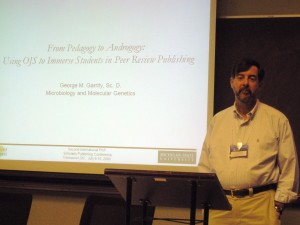
(Used with permission from George Garrity)
Background info
A course (MMG 445 Basic Biotechnology) taught at Michigan State University by George Garrity has been a leader in student open access knowledge publication. The curriculum ensures its students learn the rigorous method of peer review in their field by becoming both authors and reviewers. The course and website follow Creative Commons licensing and pay particular attention to intellectual property. The students hope to be published at the end of this course after surviving the said scientific methods of journal editing and learning about biotechnology to boot.
Session Overview
The session starts with Professor Garrity describing a 20-year old course description that claims to deliver thoroughly out-of-date biotechnology topics and methods. You would think this would mean a zero percent class registration, but in contrast the class has been increasing in size every year and the university has placed a cap at 50 students! Word of mouth has ensured that this important course for all students is continued. Why is this course important you ask? Garrity goes on to explain that there are 5 essential elements students need to possess and are rarely taught in school:
- Curiosity
- Open to new ideas
- Problem solving
- Critical reading and listening skills
- Ability to express oneself clearly (written and verbal)
He continues on to describe what happens in the real world and skills you need to possess to become successful in your field:
- work on multidisciplinary teams
- be adaptable
- ability to acquire new skills quickly.
He shows how the course has changed over the 10 past years and how the course has come from a traditional lecture based series to a now completely virtual university with all lectures given online and students able to blog/chat online with each other and professor at the same time. He has instituted a blog for students to ask questions about the given weekly lecture (and this is the class participation mark). The students do not get away with mindless, redundant questions either. They will get thrown back to the students to revise.
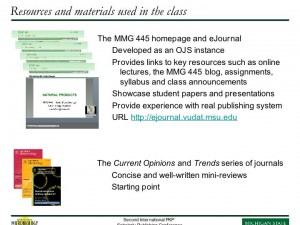
(Used with permission from George Garrity)
The course is structured into 4 assignments:
- Review paper (topic of their choice from Current Biotechnology) 30%
- Student Reviewer (4 other student papers) 30%
- Presentation of their paper 30%
- Class Participation 10%
Garrity and invited expert guest lecturers ensure that the whole process is valid and conforms to proper methodology. They also ensure that students are true to their said interests and get the work authored and reviewed in a timely fashion. The whole process has to be completed in one academic semester (13 weeks). There is a 70% acceptance rate and students are held to high standards. He relates to the class the importance of publication and how the scientific community uses this process to communicate, gain recognition and as a tool of quality control.

(used with permission from George Garrity)
The student publications can be viewed online via the Open Journal System and have been thoroughly cited in Google scholar. These review article have been cited by other peer-reviewed articles multiple times, have been published by Elsevier and have been used in hiring interviews. Student Alumni have come back to class to give ringing endorsements of the reality of the class and well as to become teaching assistants or guest lecturers.
One of the biggest components is the no-tolerance policy on plagiarism which is painfully spelled out by Garrity in class and even goes on to tell the students how he will catch them. You would think this would turn students off of the idea, but he still gives examples of multiple plagiarized papers each semester.
As stated above the course goes beyond plenary sessions to include the above unique writing as well as faculty and student-generated online videos. They do this using Web 2.0 online programs (Adobe Connect Pro/Skype) which are similar to Jove (Journal of Visualised Experiments). Please see the YouTube tutorial below for an example of how Adobe Connect Pro works. These are easy to use and cheap to install in the classroom.
Questions from the audience
Most questions centred around plagiarism and how he could detect the multiple examples.
The shared techniques from simplest to complex were:
- multiple different fonts in a paper
- multiple writing styles in a paper
- undergrad level English/grammar forging into graduate level writing and then back again
- use of technically perfect writing, however strung together in such a way that it made no scientific sense
A specific technique he used centred around an “anchoring” word which is a word that shouldn’t be used commonly that appears. He places this word with three or four surrounding words in google and tries to find wrong citations or mis-citations. All evidences of plagiarism is reported back to the Academic Council and Dean.
Notable Accomplishments
The eJournal continues to increase in circulation with >92,400 downloads to date (Source).
Seven student articles have been downloaded > 2000 times and 23 papers over 1000 times (Source).
The eJournal has been chosen as the first place recipient in the 2007 MSU-AT&T Faculty-Staff Awards for Instuctional Technology.
Related Links
Scientific Writing Reference texts

July 10, 2009 1 Comment
Making a University Library a Real Support for Research Dissemination: The Contribution of OJS and OCS: The Session Blog
Date: July 8, 2009
Presenter: Sely M.S. Costa, University of Brasilia
- Senior Lecturer, Department of Information Science
- Chief Librarian, Central University Library, University of Brasilia-DF
Interests: scholarly communication, open access, electronic publishing, institutional repositories, organisation communication, and information science theory.
Abstract
Session Overview

Sely Costa PKP2009, with permission
Presentation:
Powerpoint provided by Sely Costa
As Chief Librarian, she has started many projects to use a number of different programs to support research dissemination. Repositories now offer a simple step in the publishing process for librarians. The role of librarian has changed to become a more active participant in scholarly publication process. She works with journals, books, conferences, learning, articles, proceedings, and learning objects. They use OJS and have begun publishing. They have a project with a repository that is still in development. They have tested the use of OCS for conferences. It is under discussion for inclusion in the library system of Information Policies, Information Units and Information Services and Products. The draft of their Open Access policy is also under discussion.
PKP offers help in Conference Organizing and Proceedings, as well as e-books and e-journal publishing. They will update to the OJS Suite when it is possible. OCS has been used for both international and national conferences, has worked well and has been well received.
As librarian, her role is to highlight the new roles of these technologies. Librarians are major actors in the scholarly communication process. The University library is an essential element in the scholarly communication system.
They are the first academic library to be able to help others run conferences, etc. There is some resistance to OJS in Brazil, but the researchers at her university are in full support of it. Understanding the process makes all the difference. The activities done by the libraries now make them essential in the process.
Concluding Discussion and Questions:
(shared between Sely Costa, Brazil and the preceding workshop presenter Alberto Apollaro, Argentina)
1. <Question not heard> Sely: We are doing a project investigating over 700 uses of OJS use. People are not aware of the business models that need to be defined, nor are they aware of defining the strategic access policies to consider before creating a journal. You work with journals that already exist…but, who looks after this for CONICET? Sely: CONICET itself. We are thinking of using OJS to create journals from scratch, but we do not have clear policies of access and we need to define these policies. (See blogger’s Links of Interest near the bottom of the page)
2. (To Alberto Apollaro, Argentina ) Have you had 10 journals that have gone through the review process? Not yet. We are in the information stage with the journals. But there are journals interested in this? Yes. Comment from attendees: Libraries have lost a lot of their power, but with technologies, they are gaining new popularity. The universities are very fond of PKP software. I assume SciELO was a digital library and not a publishing agent. Sely: Yes. We think not all our publications will be in SciELO, so we need to create another collection. In the end, we need to create a bridge between SciELO and this website.
3. Sely, how do you work with your University Press, because it sounds like there could be some synergies there. (Answer summarized) We just changed our administrator. I offered to create a digital journal. He is concerned about losing subscribers. I need to talk to him about this. We have 6 or 7 African countries who speak Portugese, so if we can have these journals available for access, it is great for our university. We have Master’s dissertations that have had many, many downloads. I am a researcher and a librarian and I know what a researcher needs from the library. PKP has really helped me.
4. How do you see this playing out at other university libraries in Brazil? There are already some libraries doing it. I call myself the Open Access Evangelist. I feel so good that I have been able to influence people in my country.
Links of Interest:
CONICET is the Argentinian government agency established to organize and direct research that is publicly funded.
CONICET also has been listed on an open source portfolio (OSP) site, called OpenEd Practices, that uses SAKAI, an environment that complements the OSP software. No contributions appear from CONICET to date.
SciELO is a scientific, electronic, online library containing selected Brazilian journals.
July 10, 2009 Comments Off on Making a University Library a Real Support for Research Dissemination: The Contribution of OJS and OCS: The Session Blog
The OJS Community: who is doing what with OJS: The Session Blog
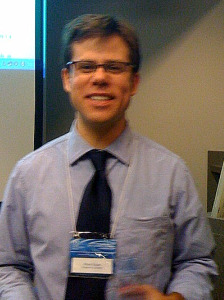
Brian Edgar at PKP 2009. Photo by C. Gratham
Presenter: Brian Edgar – Stanford University. Bio
July 10, 2009, 10:00-am-10:30 pm. SFU Harbour Centre. Rm 7000
Session Overview
Mr. Edgar presented the preliminary results from a survey of over 1,000 OJS editors around the world. The goals behind the survey were to gather information about who is using the journals, where they are located, and to gain a sense of their funding models as well as what motivates them to do this work,
While the data analysis is still in the preliminary stages, Mr. Edgar presented some of the survey results and commented on a number of the findings as follows:
- South America, Europe, and North America (in descending order) accounted for 75% of the journals
- Almost half the journals were in the Social Sciences with Health Sciences and Technology and Engineering the next most common topic areas
- More than half the journals were sponsored by academic departments and another third by scholarly associations
- The rate at which the journal accepted articles was quite variable with roughly equal numbers distributed across all the acceptance rate bands
- A very high percentage of the journals used editorial and double blind review procedures
- In most of the journals, the editor is personally responsible for copy editing, layout, and proofreading
- But it is not a full-time job for the editors. In 80% of the journals, editing requires less than ten hours per week.
- Most of the journals reported small (or zero) expenses and revenues. However, a small percentage reported more than $50,000 in both. Mr. Edgar commented that these zero expense journals seem to indicate a new model for journal publishing becoming possible
- For those journals that generated revenue, it mostly came from institutional funding, followed by subscriptions, and then from advertising
- Most of the editors were motivated to do their work due to a desire to provide new knowledge and a service to the community and not for financial benefit
- While 83% of the journals qualified for inclusion in the Directory of Open Access Journals (DOAJ), only 22% actually were included
- Around 40% of responders continued to produce print journals
Questions and Audience Comments
A lively discussion ensued following Mr. Edgar’s presentation. Some of the key points are as follows:
- While the data analysis is still preliminary, they hope to have a more complete analysis by the fall of 2009.
- One audience member asked how many of the OJS journals were included in the ISI. The original survey didn’t ask about inclusion in the ISI, but they did ask about indexing.
- There was considerable discussion about why the number of OJS journals in DOAJ is small. One possible explanation is that the DOAJ has a big backlog in evaluating journals for inclusion, so it may be possible that the number of OJS journals in DOAJ will be increase as the backlog is cleared.
- There was also much discussion about those institutions reporting zero costs. There are real costs: servers, people’s time, cost of producing the knowledge, etc. But some felt that those costs are rightly viewed as a part of the operating costs of the university and it may be legitimate to not include them specifically in the journal cost. On the other hand, some people need to be able to put a time/cost as part of their justification to create an OJS journal, and they would like to see those costs broken out. An audience member pointed out that the data collected (e.g. hours per week that editors spend on the journal) can be converted to generate this data.
Related Links
July 10, 2009 2 Comments
New Ground for Research Libraries: Conference Management Systems: The Session Blog
Presenters:
- Heidi Drasbek Martinussen, System Librarian, Technical University of Denmark
- Helle Damgaard Andersen, Webmaster, IT Department for Library and Web, Copenhagen Business School
- Kirsten Suhr Jacobsen, Conference Consultant, Copenhagen Business School Library
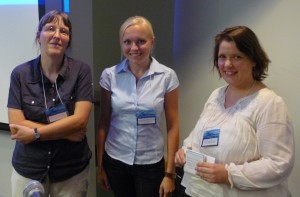
(From left to right: Helle Damgaard Andersen, Heidi Drasbek Martinussen, Kirsten Suhr Jacobsen)
Time: 2:30-3:30 pm, July 9th, 2009
Place: SFU Harbour Centre, Earl & Jennie Lohn Room 7000
———————————————————————————————
Session Overview
Beginnings
Denmark’s Electronic Research Library (DEFF) began a project in 2008 to review twenty open source and proprietary conference management systems and to test out the three that were best suited for research libraries (i.e. includes functionalities such as registration/payment, review process, etc.) This project was carried out collaboratively by the Technical University of Denmark (DTU), Aalborg University, and Copenhagen Business School (CBS); each institution was to test out seven systems, respectively.
The following diagram represents the various characteristics of the systems, such as those that only support review or registration/payment functionalities, as well as pricing – red denotes that the system was VERY EXPENSIVE.
(source)
Following the preliminary testing stages, the three institutions each chose one of their seven conference management systems, and carried out pilot projects on the selected system:
1) Proceedings Central tested by Aalborg University
Proceedings Central (now ScholarOne Proceedings) was a proprietary system developed by Thomson Reuters. While it had many benefits, its major downfall was that it was expensive and only supported review functionalities, much more like the Open Journal Systems (OJS) publication system. In addition, it was frustrating to use outside of North America because the system was configured to follow US time only.
2) Indico tested by the Technical University of Denmark
The Technical University of Denmark (DTU) has been using the Indico system for several years now. It is an open source system that was originally developed by the European Organization for Nuclear Research (CERN) and supported by the European Union. Its greatest advantage is that it makes registration very easy– setting up registration forms can take as little as half an hour. The major challenge with Indico is that the system is not aesthetically pleasing, but they are currently working on developing a better looking version that is expected to be available in the fall. The presenters likened Indico to the ‘little brother’ of Open Conference Systems (OCS) as its functions are very comparable to the latter.
3) Open Conference System (OCS) tested by the Copenhagen Business School
The Open Conference System (OCS) was developed from OJS system and thus has inherited characteristics that are not always best suited for the needs of a conference management system. An example of this is that it is difficult to set up individual conferences– they must be set up as annual conferences.
Conclusions
While there are still many items on the presenters’ wish-list for OCS, the system seems to be the best so far in terms of designs, the building of the conference site, and multilingual support. It also has a large community of users behind it, and includes a wiki, as well as a support and user discussion forum.
Future Directions – a further look into the systems
The goal for the current project is to have DTU run fourteen conferences with Indico in 2009, and CBS run seven conferences with OCS to further develop and examine the respective systems. DTU and CBS also hope to collaboratively develop a ‘light’ version of OCS, that has fewer functions to better:
- provide for a quick set up for registration,
- support a conference that already has its own webpage, but requires payment and review functions,
The Role of the Library
The presenters also highlighted the role of the library in relation to the use of conference management systems. The library can serve as technical/user support, act as a central solution and housing for conferences, as well as provide payment system integration so that users are not limited to using PayPal.
Questions
Comment: Fantastic work. It is exciting to see someone to push forward OCS. Major problem with both OJS is that everyone is going in different directions. The more institutions pick up OCS, the more polish and fine-tuning it is going to get. Good to get feedback. This is the advantage to open source– this is how the software improves! And an obvious sign that the community works effectively.
Question: What is the volume for abstracts, attendees, etc. (that is provided by OCS)? Answer: Very wide range.
Question: How did you come down to deciding on Indico and OCS? Did you use a checklist for all the technical requirements for the 20 systems? Answer: Yes.
Question: Is there any proprietary system that has similar functional abilities of OCS and at reasonable price range? Answer: It is very difficult to get prices out of proprietary systems and functionality is usually very unclear-“this system does it all” seems to be the standard response.
References
Martinussen, H., Damgaard, H., Jacobsen, K., & Pedersen, J. (2008). Nye veje for forskningsbibliotekerne? conference management systems. DF Revy, 31(8), 21-23.
Related Links
July 10, 2009 Comments Off on New Ground for Research Libraries: Conference Management Systems: The Session Blog
Revues.org and the Public Knowledge Project: Propositions to Collaborate (remote session): The Session Blog
Presenter: Marin Dacos
July 9, 2009 at 10:00 a.m. SFU Harbour Centre. Rm. 7000*
*Important Note: As this was a remote session, the presenter’s voice was inaudible most of the time due to technical difficulties and constant breaks in the live audio streaming. Therefore, it was difficult to capture parts of the presentation.
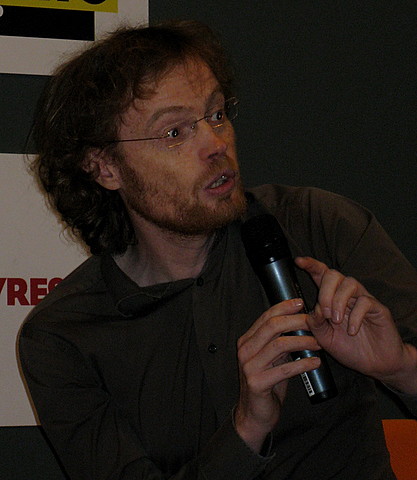 Marian Dacos (Source)
Marian Dacos (Source)
Background
Session Overview
Mr. Martin Dacos initiated the session by providing a background summary on Revues.org. He indicated there are currently 187 members, with 42000 online humanities and social sciences full-text, open-access documents (Session Abstract). He mentioned that approximately ten years ago, systems were centralized and focused on sciences. And since the beginning of Revues.org, only PDF documents were processed for publishing by converting to extensible markup language (XML). Later, Lodel (electronic publishing software) was developed as a central management system (CMS) where the web service could convert word documents to XML. This is around the time when the Public Knowledge Project (PKP) started up and its focus was to decentralize and provide a more international access point for the publishing of journals and management of conferences through the Open Journal System (OJS). During this time, the two projects, Lodel and PKP, started to converge with two distinct parts and four kinds of services.
(1) The Project Details
The first part of the project, as Mr. Dacos described it consists of using PKP to develop a manuscript management tool to monitor the workflow through OJS. There is a need to create a new interface for users and make it more human-friendly for interaction in order to allow for the dissemination of documents. This portion of the project also investigates the possibility of connecting Lodel and OJS so both systems can use the system jointly. Next, Mr. Dacos explained the second part of the project which deals with document conversion called OTX – which will convert for example RTF to XML. This parallels PKPs development and there is the possibility of sharing information on this creation.
(2) Services
Revues.org offers various kinds of services to allow for the dissemination and communication of scholarly material and other information such as upcoming events. One of the services presented by Revues is Calenda which is claimed to be the largest French calendar system for the social sciences and humanities. This calender service is important because it disseminates information such as upcoming scientific events to the rest of it’s audience. This communication tool is crucial in bringing members of various online communities together to participate in ‘study days,’ lectures, workshops, seminars, symposiums, and share their papers. Another valuable service offered by Revues.org is Hypotheses which is a platform for research documents. This is a free service which allows researchers, scientists, engineers and other professionals to post their experiences on a particular topic or phenomenon for sharing with a wider audience. One can upload a blog, field notes, newsletters, diary inserts, reviews on certain topics, or even a book for publishing. A third service offered by Revues.org is a monthly newsletter called La Lettre de Revues.org. This newsletter connects the Revues.org community together by showcasing various pieces of information. For instance, new members who have recently joined are profiled and new online documents are highlighted for it’s subscribers to read.
The remainder of Mr. Marin Dacos’ talk focused on Lemon8 and OTX which was difficult to interpret due to technical issues.
Questions from the audience asked at Mr. Dacos’ session:
It was difficult to get an audio connection with Mr. Dacos due to technical difficulties, therefore questions were not asked.
Related Links
- Lodel – electronic publishing software system
- The Centre of Open Electronic Publishing
- The National Centre for Scientific Research
- “The CNRS reinforces its policy of access to digital documents in the human and social sciences” (Article)
- Lift France 09 – Conference attended in France
References
Dacos, M. (2009). Revues.org and the public knowledge project: propositions to collaborate. PKP Scholarly Publishing Conference 2009. Retrieved 2009-07-09, from http://pkp.sfu.ca/ocs/pkp/index.php/pkp2009/pkp2009/paper/view/208
July 10, 2009 Comments Off on Revues.org and the Public Knowledge Project: Propositions to Collaborate (remote session): The Session Blog
Free? What’s So Special About Learning? The Intellectual Property Argument: The Session Blog

Taken at the Open Medicine benefit fund-raiser; November 21, 2007 (Source: http://upload.wikimedia.org/wikipedia/en/c/c4/John_Willinsky.jpg)
Presenter: Dr. John Willinsky – Director, Public Knowledge Project. Professor, Stanford University and the University of British Columbia. Bio
July 8, 2009, 7:30-pm. Morris J Wosk Centre for Dialogue
Session Overview
Dr. Willinsky set the context for his address by using adoption of Open Journal System to illustrate the expansion of open access. He noted that at the 2007 PKP conference, 1000 journals used OJS. Now, at the 2009 conference, there are approximately 3000 OJS journals. Of these, he noted that 29% spend $0 on expenses and 24% reported no revenue at all. Dr. Willinsky noted that these figures indicate the emergence of a new, third kind of independent journal that can run on a zero budget economic model.
However, Dr. Willinsky asks us not to focus on this knowledge being free (as in beer). After all, scholarly work is not free: it is very labour intensive. Through the entire domain of research, curriculum development, writing, editing, reviewing, and publishing in journals, scholarly work is expensive. Consequently, he argues for expanding the conversation about open access to scholarly publishing beyond the question of it being free. Instead, he asks us to reach back in time and recall how learning has long been treated as a type of (intellectual) property that is distinct from other (economic) properties. “There is a distinction between the type of intellectual property we produce in education and that produced by Michael Jackson or Justin Timberlake, so why should it be treated the same?”
Using a number of examples to illustrate the point, Dr. Willinsky recounted the historical consistency of the university being recognized as something outside of the regular economy. He pointed out that by the 12th century there was already such recognition in that university members had many special rights including some rights of the clergy, the right of safe conduct, and the right to bring manuscripts across borders without paying tax. He also spoke about how scholarly contributions were recognized through acts of patronism from royalty and how rent controls were used in Oxford to protect students from being exploited by greedy landlords.
In particular, Dr. Willinsky notes that this different view of the property of education is rooted in John Locke’s work on property. Locke spoke about property in two different ways: that we are given the work in common, and that every man has property in his own body. To Locke, because we labour (work), we have some claim to property based on the notion of the right to exclude (enclosure). The intellectual property of learning is founded in these basic Lockean principles (e.g. labour invested and held in common), but it is somewhat different because it’s value is not realized in the principle of exclusion. Instead, if we enclose intellectual property, we reduce it’s value. So the value of intellectual property is realized when it is shared and that value increases the less restrictive it is. Dr. Willinsky summarized this Lockean argument about the intellectual property of learning as follows: we hold all this knowledge in common and we realize it’s value in the unrestricted circulation of this intellectual property.
Turning to some of the relevant legal aspects of the argument, Dr. Willinsky began by recounting the fight over the licensing of books. In the 17th century, there was such excessive piracy that it removed the financial incentives for produce and publish books. Consequently, in 1710 the first copyright act (Statute of Anne) was passed to specifically recognize the rights of authors. Significantly, this statue was noted as an “act for the encouragement of learning”. Additionally, the act also recognized the right of universities to publish what ever they wanted and required publishers to provide to university libraries with 9 copies, on the best paper, of each book they published.
Moving to modern times, Dr. Willinsky illustrated this special place that intellectual properties of learning have been given with a number of examples:
- Fair dealing (fair use in US) exceptions to copyright law. These include the right to quote for non-commercial, critical and parody use and provides protection under the law for students and scholars.
- The academic exception to intellectual property rights. Scholars have the natural ownership rights to all the works they produce, unlike other non-educational industries where workers don’t have those rights.
- Patent law allows us to use patented material for learning without paying a fee.
- Tax exemptions for university endowments in the US.
In closing, Dr. Willinsky asked the audience to take up the challenge as follows:
- In our work he asks us to focus not on making things free, but to promote the notion that the value of the work we do in education is realized in it’s sharing.
- He asks us to look for opportunities to defend and experiment, to take advantages of opportunities to share our work, to expand our own policies moving toward open access, and to demonstrate the ways that intellectual properties of learning are different.
Related Links
July 10, 2009 1 Comment
The new Érudit publishing platform: The Session Blog
Presenter: Martin Boucher
July 9, 2009 at 9:30 a.m. SFU Harbour Centre. Rm 7000

Martin Boucher (picture taken by Pam Gill)
Background
Mr. Martin Boucher is the Assistant Director for the Centre d’édition numérique/ Digital Publishing Centre located at the University of Montreal, located in Montreal, Quebec. This centre along with the library at the University of Laval are the sites of the Erudit publishing locations which serve as a bridge to the Open Journal Systems (OJS). Erudit focuses on the promotion and dissemination of research similar to the Open Access Press (part of the PKP 2009 conference).
Session Overview
Mr. Martin Boucher highlighted the features and implications of a new publishing platform called Erudit (Session Abstract). He focused on sharing the capabilities of the Erudit publishing platform by first providing a brief historical overview of the organization, describing the publishing process, then introducing Erudit, and concluding with the benefits of such a platform.
(1) Historical Overview
Mr. Boucher started the session by pointing out that Erudit is a non-profit, multi-institutional publishing platform founded in 1998. This platform, based in Quebec, provides an independent research publication service which consists of access to various types of documents in the humanities and social sciences fields to the universities. Erudit also encouraged the development of Synergies which is a similar platform but targets a more mainstream audience since it is published in English. Some facts about Erudit:
- International standards are followed
- Publishes over 50000 current and back-dated articles
- Offers management services, publishing, and subscriptions
- 90% of the downloads are free
- Have over 1 million visits per month
(2) Publishing Process
The description of the publishing process constituted at least a third of the presentation time. Mr. Boucher felt it necessary to take the time to describe to the audience the details involved so it would be easier to compare the similarities and differences between the new and old versions of the system. To begin, Mr. Boucher indicated the publishing process accepted only journals based on extensible markup language (XML), and various input sources (In Design, QuarkXPress, Open Office, Word, RTF). Also, he pointed out that there are no peer-reviews, in fact: only the final documents are considered to be a part of the collection. It should be pointed out that these documents meet high quality standards as they are expected to be peer-reviewed before submitting to the publishing platform. As of yet, Erudit does not have the software to assist in a peer-review type of process. The belief of the Erudit community is to provide quick digital dissemination of the articles. This complicated, lengthy process is made possible by a team of three to four qualified technicians, one coordinator, and one analyst, all of whom ensure a smooth transition of the documents into the virtual domain. The publishing process consists of five key steps as outlined in Figure 1. Mr. Boucher elaborated on the importance of the analysis step. He went on to outline the three steps of the manual semantic analysis. The first consists of manual and automated tagging where detailed XML tagging is only for XHTML, and less tagging is done on PDF files. The second step consists of the automated production of XML files for dissemination. And lastly, a rigorous quality assurance by the technicians prior to dissemination sums up the analysis step of the publishing process.
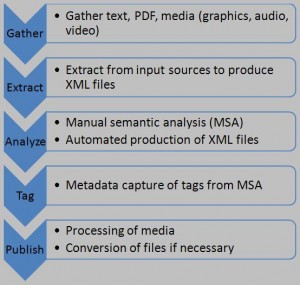
Figure 1: The publishing process (image created by Pam Gill)
(3) New Erudit Platform
Once the publishing process was described, an illustration of the new Erudit platform was revealed. Mr. Boucher indicated there is now increased support for journal articles through the Erudit Article 3.0 XML schema (see Figure 2). Further, there is support for additional scholarly genres such as books, proceedings, and even online courses (a recent request). It should be mentioned here that some of these other forms of documents are still in the experimental stages such as digitizing books. In addition, there is continued support for other XML input/output formats to ensure preservation and interoperability such as with the Open Archives Initiative (OAI), Google Scholar, and indexing databases.
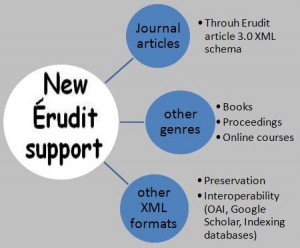
Figure 2: The new Erudit support system (image created by Pam Gill)
(4) Benefits
To conclude his presentation on Erudit, Mr. Boucher explained the advantages of incorporating such a system by mentioning particular benefits of interest:
- Purely Java-based
- User-friendly because they have a universal set of tools inside the applications which makes it easier for the support technicians to troubleshoot and work with
- Supports plug-ins and extensions
- All scholarly genres are supported
- The process is simpler to follow
- An increase in the quality of data is noted
- The decrease in production time is evident
- There is less software involved
Mr. Martin Boucher hinted that the beta version of Erudit was to release in Fall 2009.
Questions from the audience asked at Mr. Boucher’s session:
- Question: For the open access subscription of readership which consists of a vast collection, are statistics being collected? Answer: Not sure.
- Question: Will the beta version of the publishing platform be released to everyone for bug reporting, testing, or move internally? Answer: Not sure if there will be public access. But it is a good idea to try the beta platform.
- Question: Are you considering using the manuscript coverage for the Synergies launch? Answer: The new platform is creatively tight to what we are doing, and it is really close, with Synergies in mind.
- Question: In a production crisis, are journal editors with you until the end of the process? Answer: They are there at the beginning of the process. They give material, but we do our own quality assurance process and then we release to the journal, however it is our own control. Also, the editors cannot see the work in the process such as the metadata, thought we do exchange information by emails.
- Question: Has the provincial government been generous in funding? Answer: The journals had to publish in other platforms. There is a special grant for that. It is easier for us with that granting repository for pre-prints, documents or data section of the platforms which serve as an agent for them. Yet, Erudit is not considered by the government, although we are trying to get grants from the government. Currently to maintain the platform we only have money for basic management. In order to continue developing platforms (such as Synergy), to get support from the government is difficult.
- Question: How do the sales work for the two platforms? Answer: If you buy it, you will have all the content and access increases.
- Question: How is it passed to the publisher? Answer: The money goes to the journals, keep only a small amount for internal management since we are a non-profit society.
- Question: Could you describe the current workflow and time required to publish one article? Answer: It depends on the article. If we are publishing an article that has no fine grain XML tagging or it is text from a PDF, then it requires less time for us to get it out. It depends on the quality of the article and the associated graphics, tables, size etc. We publish an issue at a time. It takes say two days to get an article published.
Related Links
University of Montreal receives $14M for innovation (news article)
Contact the University of Montreal or the University of Laval libraries for more information on Erudit.
References
Boucher, M. (2009). The new erudit publishing platform. PKP Scholarly Publishing Conference 2009. Retrieved 2009-07-09, from http://pkp.sfu.ca/ocs/pkp/index.php/pkp2009/pkp2009/paper/view/182
July 10, 2009 2 Comments

